Color and Light
Chapter 9: Surfaces and Effects
Transmitted Light
- Light traveling through some semitransparent material.
- Look for the four color groups:
1. Transmitted
2. Downfacing Shadow
3. Upfacing Shadow
4. Toplit with sun
Subsurface Scattering
This effect shows up most with three conditions:
1. Translucent flesh
2. Small forms
3. Backlighting
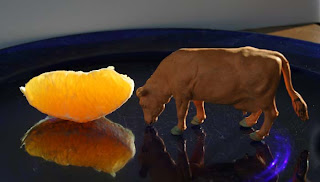
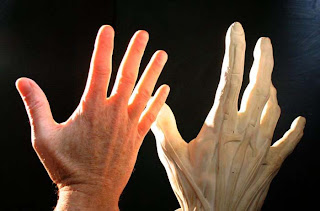
Color Zones of the Face
Forehead: light golden color.
Brow-line to bottom of nose: reddish color.
Bottom of nose to chin: bluish, greenish,or grayish color.

The Hair Secret
Tips to avoid "stringy look":
- use big brushes
- keep masses simple
- soften the edges (look for areas close to the temple and where hair meets the neck)
- control the highlights
Caustics
Water acting like a lens to focus rays or spots of light.
- Happens above or below water on surrounding objects.

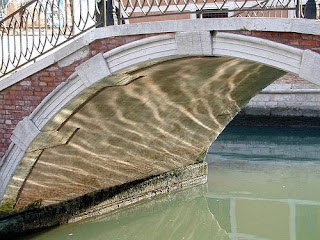
Specular Reflections
Three rules of Specularity:
1. The more reflective the surface, the broader the range of values you need to paint it.
2. Convex surfaces reflect a miniature view of the surrounding objects.
3. The specular pattern is a separate layer added on top of the usual modeling factors.
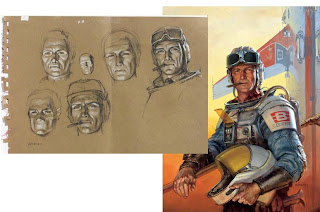
Highlights
Specular highlights: reflecting highlights.
Annular highlights: patterned highlights on objects like cookie sheets or pot lids.

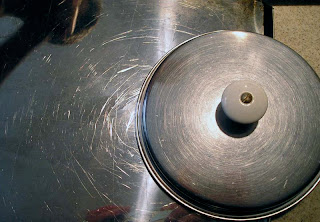
Color Corona
A bright light source is often surrounded by an area of colorful light as the light is reflected off particles in the air.
Often known as a "lens flare".
Motion Blur
Two kinds of blurring which suggest action:
1. Motion blur - form moves rapidly in front of a stationary observer or camera.
2. Speed blur - observer or camera tracks along with the rapid moving object.
Soft edges and keep the path of action in mind.

Photos vs. Observation
Photos are good reference tools but can be disappointing when recording color.
Plein-air studies include nuances of color that completely elude the camera.
Cameras distort light and color:
1. Deep shadows appear pure black while bright highlights appear pure white.
2. Colors shift and become more monochromatic. Variations (subtle) between warm and cool colors are often not registered.
3. Weak sources, like reflected colors are often lost.

100 Tuesday Tips
Clear Silhouette
To improve character posing, turn the character into a silhouette to see if it will "read".
Define shapes that will support the general idea, line of action, and weight distribution.
Separate or combine legs/arms from overall silhouette for clarity.
Lead the eye with organic, directional shapes.
Check Your Value!!
Value: black and white of the image.
If the value reads, your image will read.
Avoid too low or too high of contrast.
Too low often means there is no clean silhouette.
Too high often means the value is too spotty.
A good value composition should have:
1. Good areas of dark and light contrast.
2. Clear silhouette.
3. Full range of value.

No comments:
Post a Comment